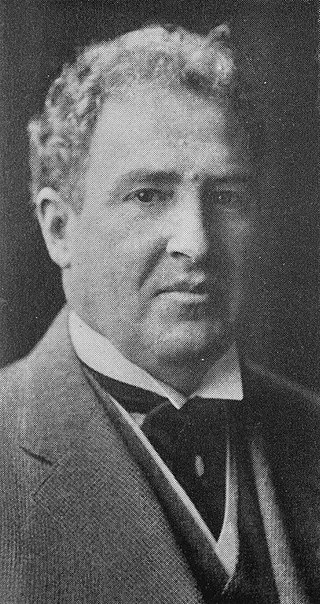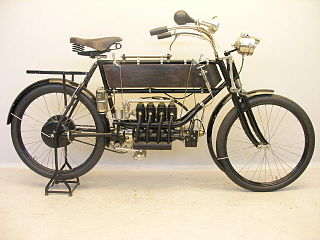
Glenn Hammond Curtiss was an American aviation and motorcycling pioneer, and a founder of the U.S. aircraft industry. He began his career as a bicycle racer and builder before moving on to motorcycles. As early as 1904, he began to manufacture engines for airships. In 1908, Curtiss joined the Aerial Experiment Association, a pioneering research group, founded by Alexander Graham Bell at Beinn Bhreagh, Nova Scotia, to build flying machines.

The Coquille River starts in the Siskiyou National Forest and flows hundreds of miles through the Coquille Valley on its way to the Pacific Ocean. Bandon, Oregon, sits at the mouth of the Coquille River on the Pacific Ocean. Before the era of railroads and later, automobiles, the steamboats on the Coquille River were the major mode of transportation from Bandon to Coquille and Myrtle Point in southern Coos County, Oregon, United States.

Jacob Kamm was a prominent early transportation businessman in Oregon, USA.

Gazelle was an early sidewheeler on the Willamette River in what is now the U.S. state of Oregon. She did not operate long, suffering a catastrophic boiler explosion on April 8, 1854, less than a month after her trial voyage. This was the worst such explosion ever to occur in the Pacific Northwest states. The wrecked Gazelle was rebuilt and operated for a few years, first briefly as the unpowered barge Sarah Hoyt and then, with boilers installed, as the steamer Señorita. A victim of the explosion was D.P. Fuller, age 28, who is buried in Lone Fir Cemetery in Portland, Oregon.

R. L. Polk & Company was a provider of business and marketing information to the automotive industry, insurance companies, and related businesses. It was based in Southfield, Michigan with operations in several other countries, including Canada, Germany, the United Kingdom, France, Japan, China and Australia. Its business-to-business marketing services included PolkInsight, the National Vehicle Population Profile (NVPP), Blackburn / Polk Marketing Services Inc. (BPMSI), Polk Dealer Marketing Manager, The Ultimate Perspective (T.U.P), Polk Canada Net, Polk Vehicle Lifecycle System, Polk CrossSell Reports, and Polk Total Market Predictor. From 1999 it was the owner of the vehicle data service Carfax.
Edward C. Schulmerich (1863–1937) was a businessman and politician in the U.S. state of Oregon. A native of California, his German family moved to Oregon when he was a boy, settling near Hillsboro. There he worked in the banking industry and other professional pursuits. A Republican, he served in both houses of the Oregon Legislative Assembly and prior to that on the city council of Hillsboro. His former home, the Edward Schulmerich House, is listed on the National Register of Historic Places.

John Everett Tourtellotte was a prominent western American architect, best known for his projects in Idaho. His work in Boise included the Idaho State Capitol, the Boise City National Bank, the Carnegie Library, and numerous other buildings for schools, universities, churches, and government institutions. From 1922 to 1930, he worked in Portland, Oregon.

John Virginius Bennes was an American architect who designed numerous buildings throughout the state of Oregon, particularly in Baker City and Portland. In Baker City he did an extensive redesign of the Geiser Grand Hotel, designed several homes, and a now-demolished Elks building. He moved to Portland in 1907 and continued practicing there until 1942.
Tourtellotte & Hummel was an American architectural firm from Boise, Idaho and Portland, Oregon.

The Blake McFall Company Building, also known as the Emmett Building, in southeast Portland in the U.S. state of Oregon, is a five-story commercial warehouse listed on the National Register of Historic Places. Designed by McNaughton & Raymond of Portland and built in 1915, it was added to the register in 1990. The 100-by-200-foot structure is representative of a group of timber-framed loft warehouses built in the early 20th century on the east side of the Willamette River.

Sutton & Whitney was an architecture firm based in Portland, Oregon, United States, operating from 1912 to 1950. Its principal partners were Albert Sutton (1866–1923) and Harrison A. Whitney (1877–1962). In 1934, it became Sutton, Whitney & Aandahl, after full membership was granted to Frederick Aandahl (1887–1950), who had already been working for the firm as chief draftsman since 1919 and as an associate since 1923.

The FN Four was the world's first production inline-4 motorcycle, manufactured in Liége by Fabrique Nationale from 1905 until 1923. It was also, at 40 miles per hour (64 km/h), the world's fastest production motorcycle from 1911 until 1912.

The Colorado Springs and Interurban Railway was an electric trolley system in the Colorado Springs, Colorado area that operated from 1902 to 1932. The company was formed when Winfield Scott Stratton purchased Colorado Springs Rapid Transit Railway in 1901 and consolidated it in 1902 with the Colorado Springs & Suburban Railway Company. It operated in Colorado Springs, its suburbs, and Manitou Springs. One of the street cars from Stratton's first order is listed on the Colorado State Register of Historic Properties.
Blalock was an unincorporated community located in the Columbia River Gorge in Gilliam County, Oregon, United States. The town displaced a Native American settlement originally named Táwash. Blalock was located about 7 miles (11 km) west of Arlington on Interstate 84/U.S. Route 30 at the mouth of Blalock Canyon. Blalock is still the name of a station on the Union Pacific Railroad.

The People's Transportation Company operated steamboats on the Willamette River and its tributaries, the Yamhill and Tualatin rivers, in the State of Oregon from 1862 to 1871. For a brief time this company operated steamers on the Columbia River, and for about two months in 1864, the company operated a small steamer on the Clackamas River.

James Clinton was a steamboat which operated on the upper Willamette River from 1856 to 1861. Although the Clinton was said to have been "not a very good boat.", it was the first steamer ever to reach Eugene, Oregon. James Clinton was destroyed in April 1861, when a large fire broke out at Linn City, Oregon in a shoreside structure near to where the vessel was moored.

Wenat was a stern-wheel steamboat that, under the name Swan, was built and operated, briefly, on the Tualatin River, in the state of Oregon. In 1858, Swan was sold, moved to the lower Willamette River, renamed Cowlitz, and placed on a route between Portland, Oregon the Cowlitz River.

Occident was a steamer that operated on the Willamette River and occasionally its tributary, the Santiam River from 1875 to about 1890. Occident was designed primarily for freight work, and did not have passenger accommodations. This Occident should not be confused with the smaller steam launch Occident, apparently propeller-driven, which operated out of Astoria, Oregon in the 1890s.

La Center was a small stern-wheel steamboat that operated from 1912 to 1931, mostly on the Lewis and Lake rivers in southwest Washington, on a route to and from Portland, Oregon along the lower Columbia and lower Willamette rivers.

The Portland New Chinatown/Japantown Historic District is a historic district in Portland, Oregon's Old Town Chinatown neighborhood, in the United States. The district is listed on the National Register of Historic Places.


















